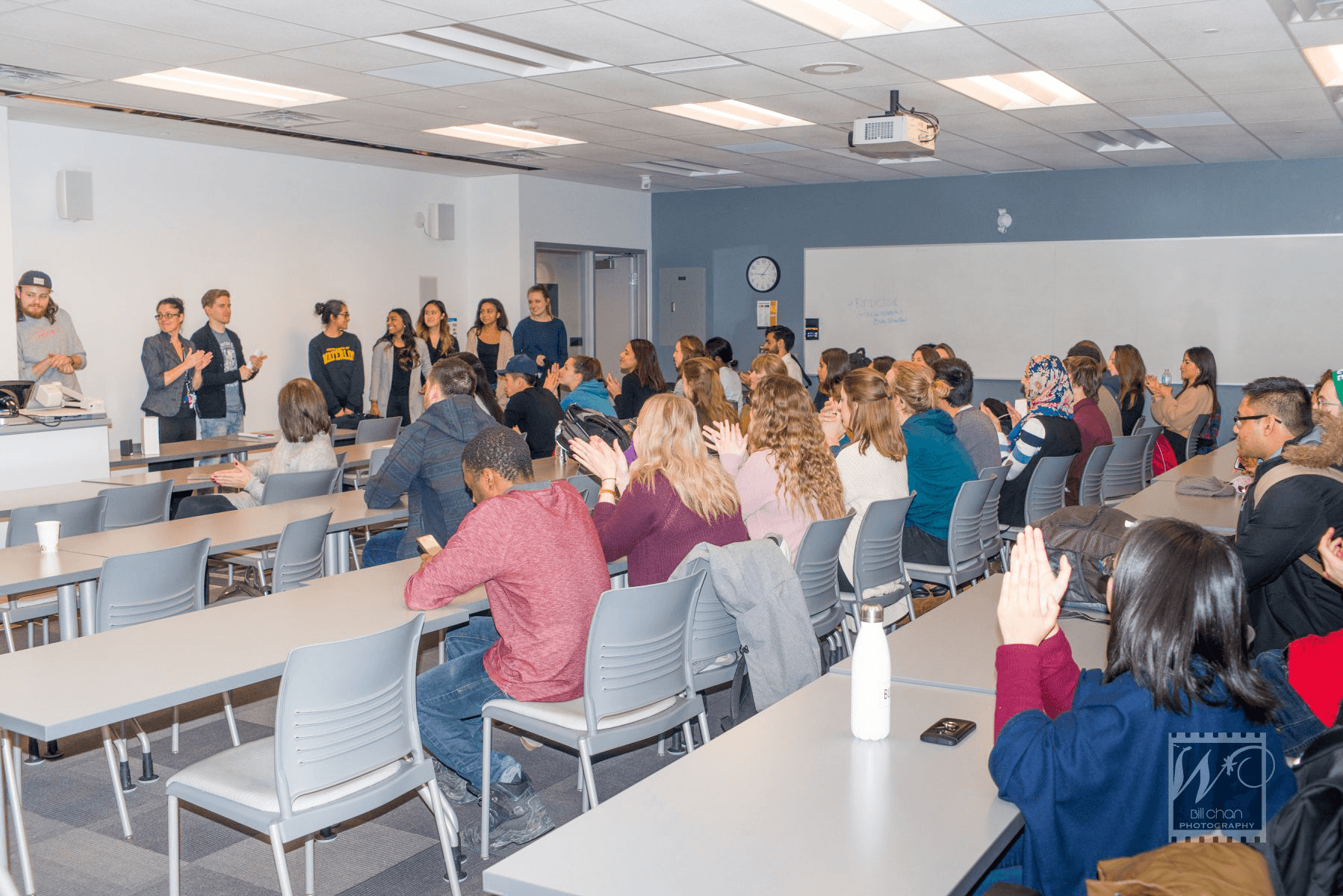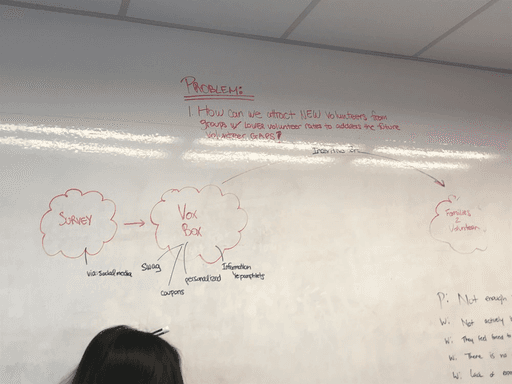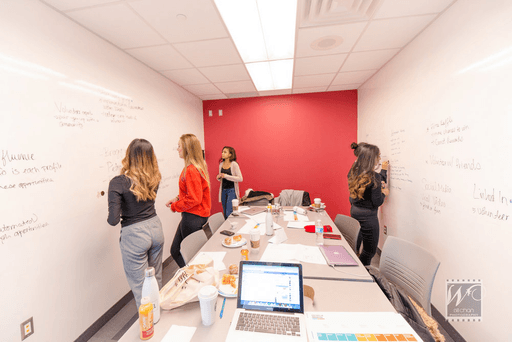UX/UI DESIGN
UX/UI DESIGN
UX/UI DESIGN
UX/UI DESIGN
HACKATON
HACKATON
HACKATON
HACKATON
🥇 First Place
For developing a system that attracts new
prospects for the problem under 12 hours
I was fortunate to participate in The Business Model Design Camp 2018. Coached by mentors and seasoned professionals, we were guided to brainstorm cutting-edge solutions employing design-thinking methods for superior business model development. It was a memorable event!

Problem
To develop a solution to address the imminent volunteer gap as the core volunteer group who represent a large portion of the current volunteer effort age out of their ability to volunteer and the younger age demographics fail to expand their volunteerism to tackle the need.

PURPOSE:The primary goal is how can we attract new volunteers from groups with lower volunteer rates to address the future volunteer gap?
MY ROLE: For this project I lead the design, user experience and evolution of the brand guidelines. Within the timeframe in mind, I crafted high fidelity prototype of the EMPAC box design by understanding the target market to identifying a colour theory that works best. I provided user experience aid and assisted in the overall ideation and production development phase. I also helped conduct user research using methods such as interviews, surveys, and utilizing the "Fly on the Wall" technique in order to address both user behaviour and attitudes. I collaborated with my peers to apply user centric design processes and human factors to develop EMPAC's final product/service.
Research


Plenty of nationwide studies exist regarding non-profit organizations and volunteerism hence, we looked into these data to assess areas of concern, and reasons why people weren't volunteering as much. Some of our findings included:
● More inclined to volunteer with incentives.
● Wanted organizations to take the first step.
● “Middle-aged adults, who are often parents of school-aged children, were the most likely to do volunteer work.”
● “48% of people aged 35 to 44 volunteered in 2013, higher than the average of 44%.”
| Source: Statistics Canada,Volunteering and charitable giving in Canada


Brainstorming:
Collectively we came up with various ideas through plotting it on the white boards that were available to us in our project room. Zen voting allowed us to pick a topic that we wanted to concentrate further and develop a solution.
Persona
Based on our target demographics and people who might have a hard time find volunteering opportunities, we a persona. The bases of the personas is based on a real person we had met or spoken to about the issue with. The persona helps identify how users will fall under the product/service we want to create to help better understand our target markets' needs, experiences, behaviours, and goals.

Target Market
The target audience are young families wanting to teach their children about empathy. We believe that, this demographics would love to take part to bond with one another through activities. Volunteerism helps these families come together to help a community which is beneficial to both the families and the non-profit organizations.
Solution

Skills
Deliverables
Tools
Product Design
UX Design
Marketing
Survey
High Fidelity Mockups
Box Design
Website Prototype
Adobe Photoshop
Figma
EMPAC BOX SUBSCRIPTION

Our solution to resolve the core problem is through creating a product called, EMPAC. EMPAC, “Empathy in a Package”, is a family volunteer package in which it provides the resources for families to volunteer together. This solution won first place at the Business Model Design Camp. This design camp is a one-day event to create and design business models to solve complex business challenges, sponsored by Deloitte.
EMPAC essentially is a family volunteer experience package that reiterates the volunteer opportunities available for families to take part in with their kids.
The objective of the product are:
Helping teach kids empathy
Allows parents and children to get involved
Pair not-for-profit organizations with families

We saw EMPAC really as an integral part of connecting our target with volunteer opportunities. The EMPAC subscription provides the families with information and various merchandises that connect back to the volunteer opportunity the family is paired up with. We believe that creating a tangible product will create an immense impact. We've placed a large emphasis on educating and instructing our target market on the what, where, when, and how to find volunteering.
WorkFlow

Initially, we believed that in order to attract volunteers we needed to teach and mould individuals at a young age about the importance of volunteerism to get them to continue what they learned in the future. We considered looking into curating a tool or a course that can be incorporated within the education system. However, we realized that it may not be easy or feasible to add into a child's curriculum due to the lack of time and resources available to allocate towards this teaching of, "why volunteering is important".
User Testings

In order to identify whether or not this product was worth building, as well as what it needed to accomplish, we started out by assembling a focus group of target users. When we conducted user testings using adults in their middle age, it came to our attention that parents wanted their children to acquire knowledge about positive impacts on society and become more community driven however, these parents were unable to provide their children with the resources to do so. After sifting through all of their responses, we pivoted our idea to target families with young children as not only do these kids spend majority of the time at home, kids tend to look up to their parents as role models which will help motivate them to to incorporate volunteering as a lifestyle. The inability to do so, helped us realize that the core issue can be resolved using other methods. We came to a conclusion that, changing our target market to families with young children will enable us to provide the parents with resources to showcase the various opportunities available which ultimately develops awareness about the importance of volunteering to the children of these parents. Overall, we focused on creating an MVP that met the user’s core need.
Goal
My goal for the project is to create a visual language that was intuitive, easy to understand, and guides the user with potential volunteering opportunities available based on one's interest. The UI for the website and the tangible product is built with reactivity in mind, meaning that users never get lost throughout the entire process and will get to the end point without several steps.
Marketing Insight
Monetization through tier-pricing from non-profits
We know that some organizations are more fortunate than others
We still have to look at government grants for funding related to volunteerism
Website Design
In order for people to attain more information, we decided to design a website. EMPAC is a platform that uses survey questions to match the users to a volunteer service that is best suitable for their family's interest.
After the completion of the survey, and the user agreeing with the matched volunteer opportunity, EMPAC would send out a package to the user with complimentary products and extra information booklet, pamphlets, guides catered to the specific volunteer organization the family is paired up with.
Being apart of the EMPAC community, users are able to collect points based on how often the users volunteers. The points earned will allow users to earn rewards such as SCENE®, Petro-Points™, and etc.

Next Steps
Collectively, we were able to identify the pain points of the volunteer organizations today and have tried to tackle the problem of decline in volunteers. For the future, it would be worth exploring how it could evolve to other markets to tackle the general public and find ways to implement the importance of volunteering in other mediums such as school and workplace. Ultimately the product and service EMPAC offers should help expand and grow knowledge for the future generation to understand the importance of community, volunteerism, and how heavily it impacts the overall lifestyle.
What I learned
The Business Model Design Camp was an amazing experience and helped me as designer to be more responsive and efficient to the problems thrown at me. The opportunity taught me the benefits of agile development and how it can be implemented within any scenario. The entire process wen through a create, validate, iterate, repeat process. Although, we only had 12 hours to identify, resolve, and present the problem through various design sprints and multidisciplinary thinking we were able to come up with a solution that attracted our audience.

Conclusion
The entire development of the project helped me enhance and develop technical skills such user research, product design, and presentation. At the end of the day, this design challenge helped me realize my competency to problem solve within a short amount of time. It allowed me to get work using an agile methodology while utilizing various design thinking processes and work efficiently to come up with a feasible solution.
